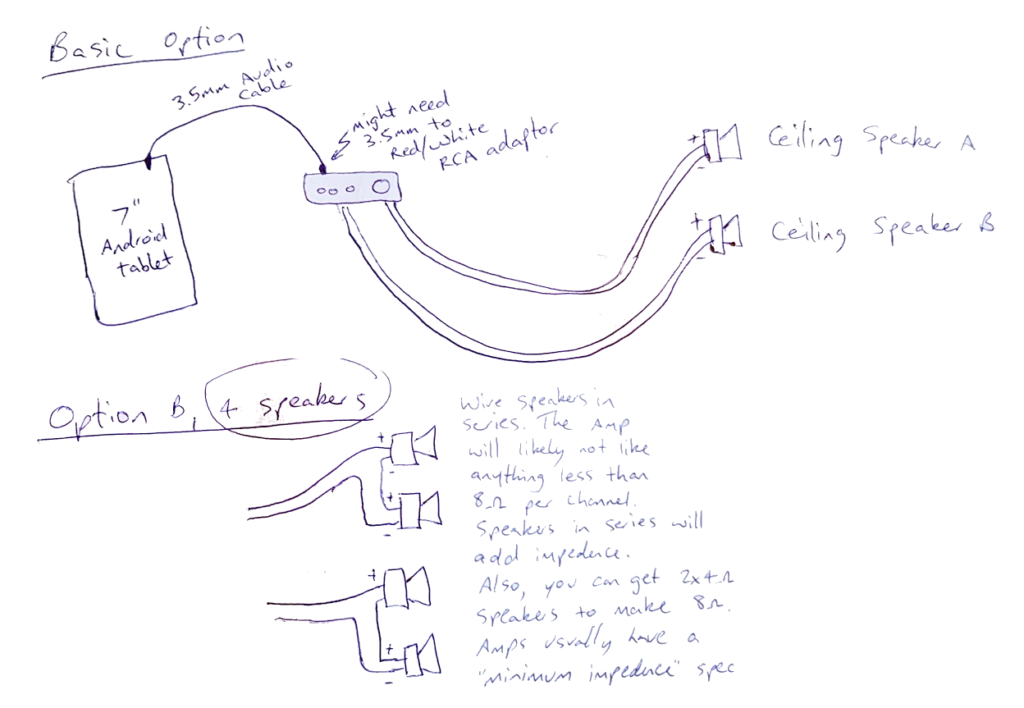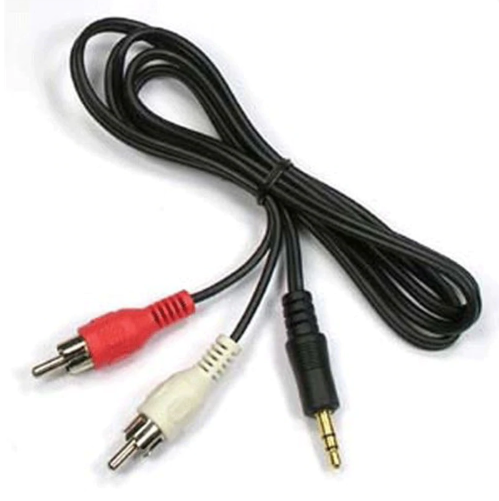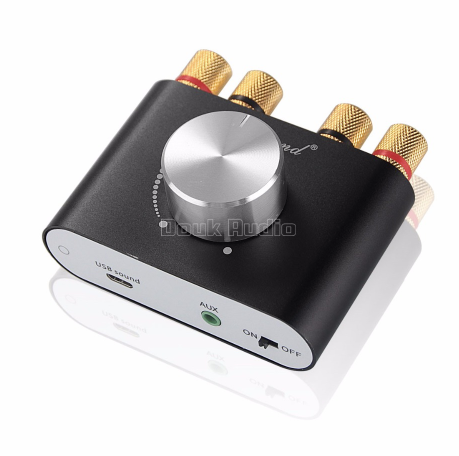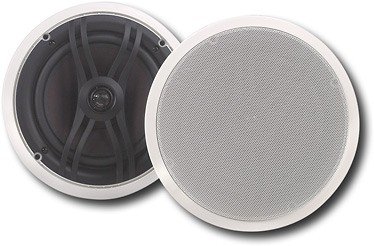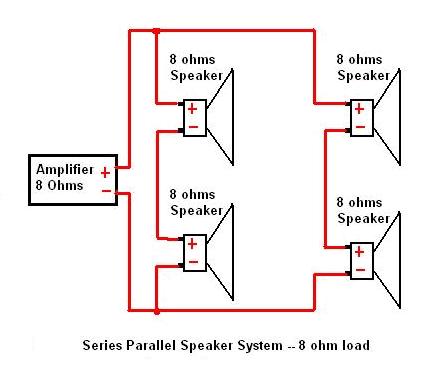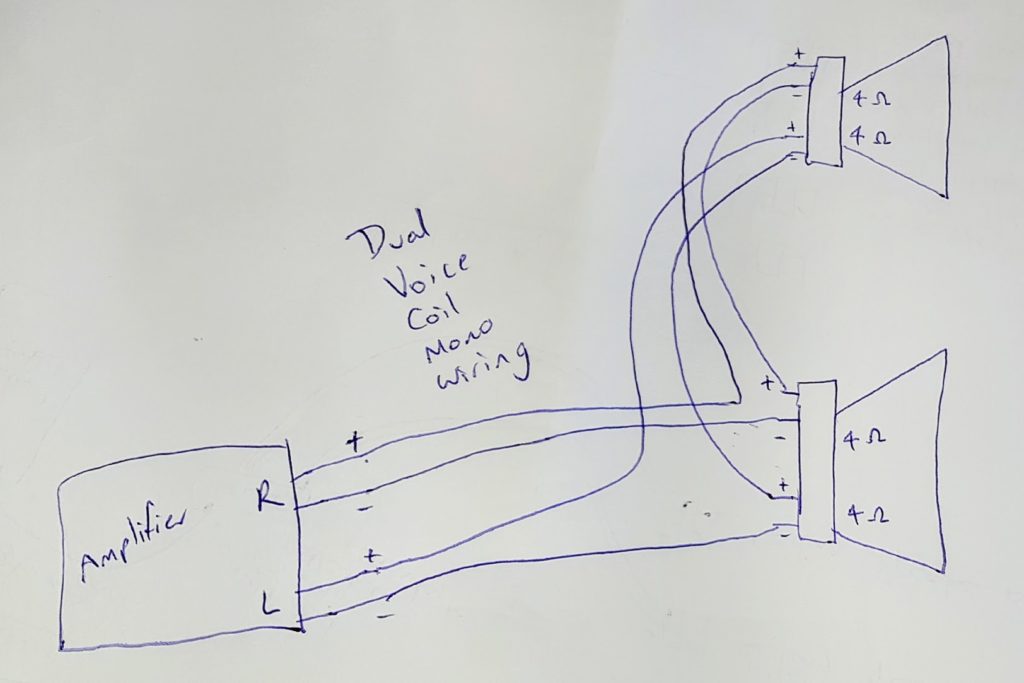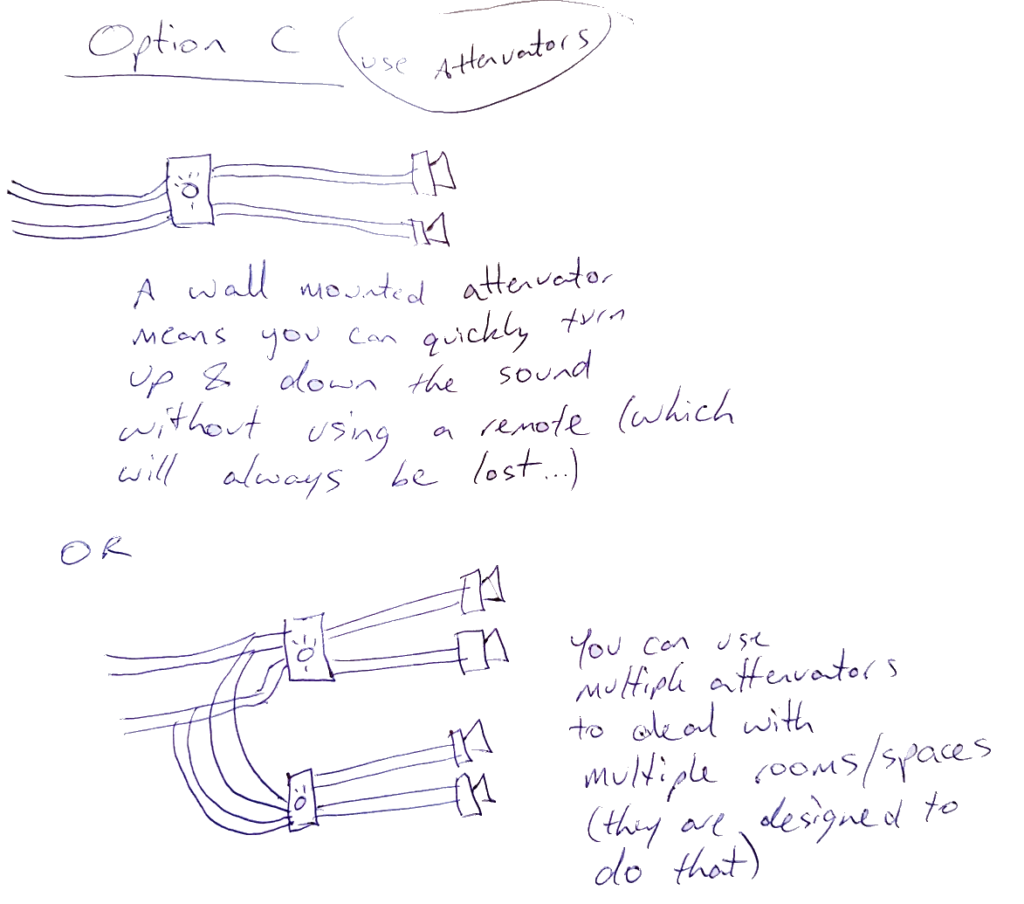Whole House Audio on the Cheap

You can pay thousands for Bose multiroom audio systems, or buy a huge stereo and crank it up so you can hear it throughout the place. You can also get multiple digital distribution amplifiers that run over Wifi (eg Sonos), but again they come at a huge cost.
What you really want though is cheap DIY multiroom background music system. Something that:
- Has a near invisible setup (music should be heard and not seen…?)
- Gives even sound. Background music should be even wherever you go, not too loud or soft.
- Is matched in all spaces (ie you can hear it everywhere, with no audio delays in some spaces)
- Is quick and easy to control (you don’t have to open up a phone app to turn the volume down)
- Preferably allows different volumes in different spaces
- Has decent quality sound for music, talk radio and even background TV/Movies
You need to be able to get into walls and make holes in ceilings for this type of setup. If you can’t do that, or you are in a rented house then this isn’t the option for you.
Basic Option
If you plan to use just a streaming music setup (eg Spotify/Pandora), I’d recommend something like the below sketch to start with, which would do one room. Use a hidden amplifier, old tablet or phone for the audio input and nice white ceiling speakers (or recessed wall mount) for distributed background sound.
Get a source
Most people have some sort of old Android tablet sitting around somewhere, or maybe an iPhone 4 that doesn’t get used. These make great streaming music sources for Spotify/Pandora/iheartradio etc. You can control it from your own phone over the internet/wifi, but the old tablet acts as the player, and mounted nicely somewhere can also be the pretty ‘content display’.
You’ll need to plug the device into permanent power, and the easiest way to get the sound out is to use a basic 3.5mm jack cable to plug into the amplifier. Bluetooth is another option (and also possibly better quality) as many of the current amps have bluetooth built in. Keeping it simple is always good idea though.
Find an amplifier
Get yourself a cheap amplifier and mount it somewhere out of the way eg on a shelf, or in a cupboard. Here are a few amp ideas that you could buy from China (I can’t vouch for any of them sorry), but an even cheaper option may be to get an old Midi type system or older amplifier second hand. Quality of most amps in the last 30 years is almost always great, but some of the more modern cheap imported ones can be a bit awful at any decent volume. Of course a Midi system takes up a bit of room, but if hidden in a cupboard you may not care. Also watch the power draw… some big old stereo amps can be a huge power drain if left on 24/7. Got a decent old car stereo that has auxiliary audio inputs? These work fine too, and you might like the idea of recess mounting it somewhere – but of course you’ll also need a 12V power supply for that.
Think about volume control
You will need to think about how to control the volume, so if you can easily access the amp, that’s fine. If it has a remote, better… but remember that an IR remote is not much use in a closed cupboard. You can (to some extent) control volume through your phone if you are using a streaming app such as spotify, but that is less convenient and your amp will have to remain on a high output…. physical amplifier knobs are always better. You can even buy an IR remote extender module very cheaply if you want to hide your amp away. (The option I like is the wall mount attenuator… see further below).
Install speakers
Your amp needs enough power to drive the speakers you will attach. I like to use ceiling speakers that are bigger than 6 inches to give decent bass, and usually 2 or 3 way for quality sound. Speakers that have white covers blend nicely when mounted in the ceiling. You may only need 2 for a small room as per the sketch above. I’d recommend 20-30 Watts RMS per speaker if you want decent background sound that isn’t clipped by over driving an amplifier. Less if you have more speakers.
Your room may suit wall mounting speakers better, but just think about heights. Also, there are plenty of options available for mounting speakers outdoors, in the rain or around pool areas.
Bigger Rooms
For a bigger room or one with low ceilings, you’ll need to add more speakers, otherwise you’ll start to get an unbalanced audio effect. Parts of the room will be loud and you won’t hear in others. Having a nice level all over allows for conversations at parties without having to shout and ensures you can move around and still hear everything. How many? Well it depends on the space, but I’ve never added more than 6 to a big room in a house. 4 does most spaces, but again budget is a limiting factor sometimes.
If you are using a single amplifier with multiple speakers, wire them in series, + to – unless you know about how impedance works (there are plenty of good articles to refer to) Most amplifiers will have a recommended impedance (and minimum) and two speakers wired in parallel will half the impedance, overdrive the amplifier and likely damage it. Wiring in series will however halve the output, so ensure you have an amp powerful enough to do this. Ideally… 4 speakers – two in series and 2 in parallel will get you back to the original impedance… but 8 in a room might be a few too many!?
Most home ceiling speakers will be 8 Ohms, but some will be 4 or possibly even 6. Speakers designed for car use will usually be 4 Ohms, and they will work equally well if you can find a nice subtle set, or one that you can spraypaint a white cover for (as long as you get the impedance right for your amplifier).
Mono is good
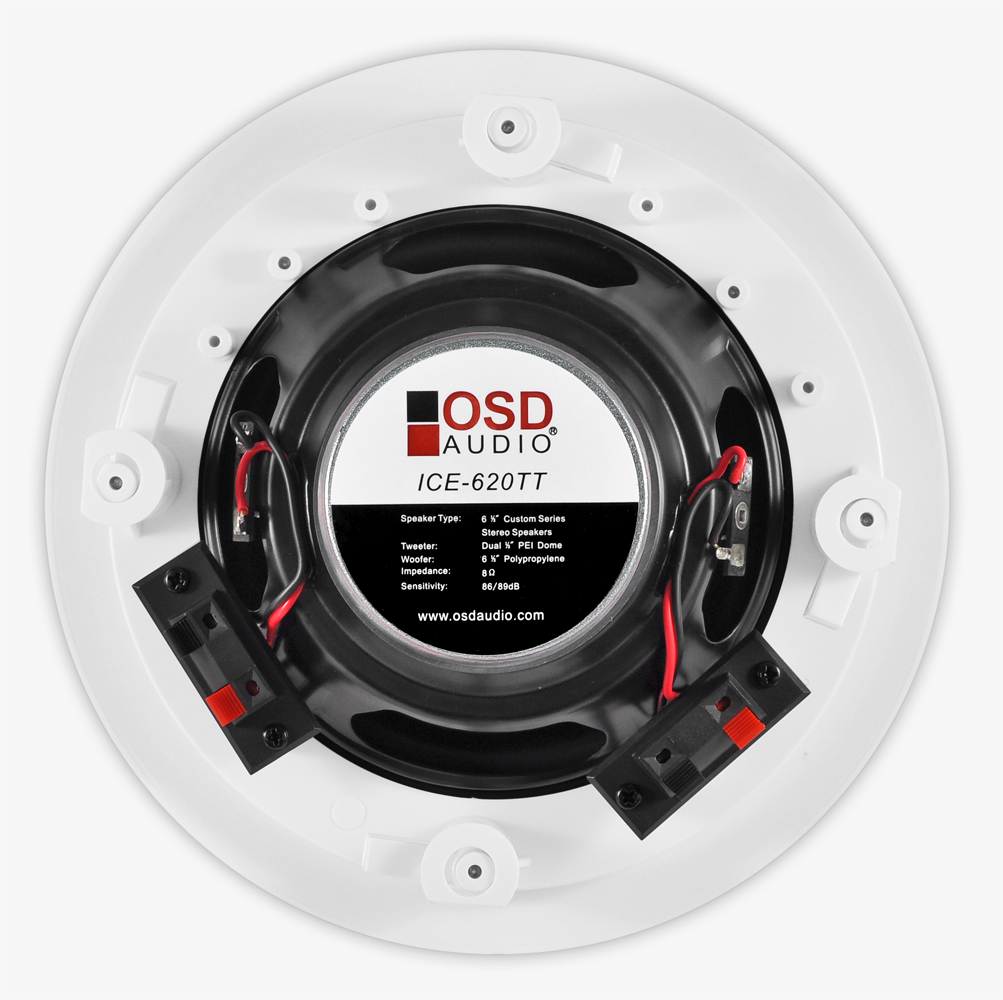
A smart thing to do if you can find them, is to use ‘Dual Voice Coil’ speakers, they are essentially one speaker with two 8 Ohm (usually) coils. This means you can wire it as 8 Ohms for two channels, or 4 or 16 Ohms for one.
Why would you wire left and right channels together? Well this is a great way to get around the stereo effect… stereo in distributed ceiling audio can be a bit annoying as you don’t want the sound to move from one side of the room to another, or suddenly just appear above your head when one channel is dominant. Some amps however will let you switch to mono which is the ideal option. A dual voice coil will also allow you to put a single speaker in small spaces that plays both stereo channels.
More Rooms
When you start getting more rooms to distribute audio to, you have a few different options. You can connect more speakers to the amplifier, OR you can start getting more amplifiers.
If you get more amplifiers, you can’t really just connect the input to a bunch of amplifiers… you’ll need to get an audio distribution box or mixer of some sort to match all the input impedances. Something like these active headphone splitter or preamp, would do. You may get away with a simple unpowered splitter for two amplifiers, but unlikely for any more without distortion as you are losing input signal with each split.
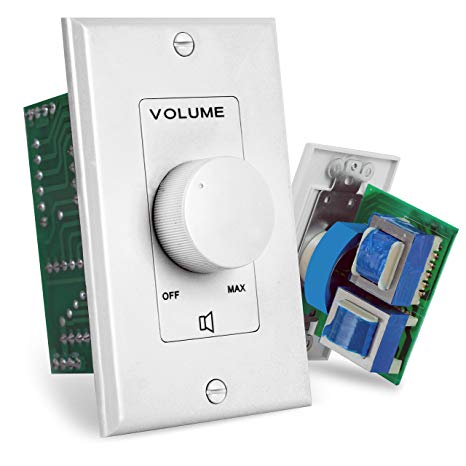
My more preferred method is to use impedance matching volume knobs or ‘audio attenuators‘ . These take an output from an amplifier and use simple circuitry to split to multiple speakers, whilst taking care of the impedance matching (there are usually switches to select various speaker combinations) and letting you control volume (usually in a bunch of steps, rather than a continuous dial). They mount on the wall for easy access to control the volume, and they look like a light dimmer.
Final thoughts and ideas
- ‘Line Driven’ or 100V speakers and amplifiers can provide a much more consistent way to distribute audio, as this is the standard for PA systems. I haven’t delved into this here.
- A system that allows multiple inputs is a great idea. Feed your TV signal (probably from the headphone jack, as it will usually have a seperate volume control in the TV menu), plus maybe inputs from a radio tuner.
- A system that allows different sources to go to different spaces is also a great setup (but not gone into here either).
- All the above setup is fully analogue. One of the limiting factors to doing this setup digitally and with multiple amplifiers is ‘music delay’. Commercial systems address this with their own (usually) proprietary methods to synchronise the sound. Look at the Snapcast project if you want to roll your own distributed streaming system.

